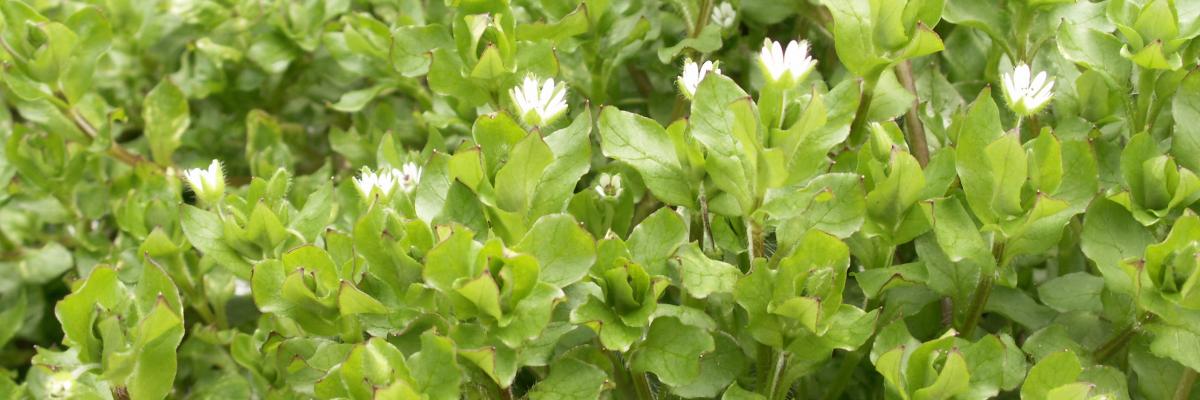

Common chickweed
View the website
Resource explained:
One of the commonest weeds of cultivated land in the UK, chickweed is a particularly frequent weed of cereals, sugar beet and other arable crops, and is a host of several damaging virus diseases of crop plants. This information from Garden Organic provides details on the occurrence, biology, persistence and spread, and management of common chickweed (Stellaria media L).
Findings & recommendations:
Common chickweed:
- Is more abundant on lighter soils and is indicative of high nitrogen and low phosphate and lime levels.
- Grows best in cool, humid conditions and can be very problematic in overwintered vegetable and flower bulb crops.
- Can accumulate nitrate and may become toxic to stock.
- Flowers and sets seed throughout the year and can complete its life cycle in 5-6 weeks.
In the field:
- Seedling emergence declines with increasing depth of seed burial.
- It forms a dense mat (see below) of spreading stems in cool wet conditions that may root at the nodes, making it difficult to hoe or pull up. Complete burial is the most effective treatment.

- It often emerges in winter when ploughing will destroy it.
- In root crops, best control is by repeated surface tillage.
- In cereals, increasing the sowing rate and reducing the row width will help suppress growth.
- Spring-tine harrowing in July can give good control.
- Stubble cultivations can give good control of freshly shed seed after cereal harvest.
- Mowing is not effective.
- On newly sown leys, grazing by sheep may to help to suppress it.
- Compost or cover crop residue spread over soil and shallowly incorporating chopped straw after cereal harvest can reduce seedling emergence.
- Seed numbers in soil can significantly reduce following a 1 - 2 year fallow.
The information is based on a review which you can also access here:
Explore the Garden Organic weeds database here.

Image above shows rye and chickweed. All photo credits: Garden Organic
